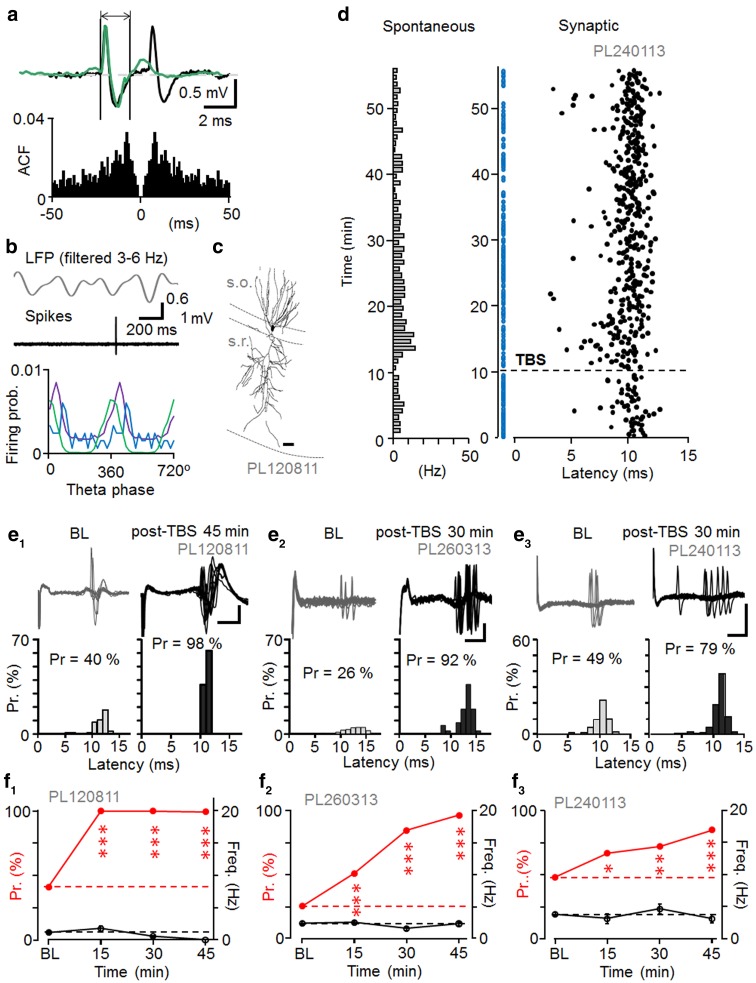Fig. 2.
Long-term potentiation of synaptic excitation in identified CA1 pyramidal cells. a Occasional complex spikes characterized spontaneous CA1 pyramidal cell firing. Top spontaneous single spike (green) and complex spike (black) superimposed from the same cell. Vertical lines define onset and the end of single spike showing slow (>1.5 ms) spike duration. Bottom autocorrelogram of spontaneous spiking. A peak at approximately 10 ms reflects the spike interval of complex spikes. b Pyramidal cells fired spontaneously with highest probability around the trough of LFP theta cycles. Top band-pass filtered LFP (3–6 Hz) and a spontaneous pyramidal cell spike (band-pass filtered at 0.3–5 kHz) during theta oscillations. Bottom spike timing histogram showing firing preference of the pyramidal cells around the theta cycle trough (n = 3, cells shown in different colors). c Recorded pyramidal cell partially visualized from one 60 μm thick section. Scale 20 μm. d Synaptically evoked spike probability and delay (latency) to single-shock stimulation in one pyramidal cell during baseline and after theta-burst stimulation of the contralateral hippocampus (TBS, horizontal dotted line). Stimuli failing to evoke spike are shown with blue dots (abscissa). Spontaneous firing of the cell is shown in Hz as bar histogram on the left (1 min bin). e, f Long-term potentiation (LTP) in the synaptically-evoked spike probability in three identified pyramidal cells after the TBS. e1–e3 Top superimposed traces showing synaptically-evoked spikes with occasional failures in the three cells during baseline (BL) and after the TBS (post-TBS). Scales 1, 0.2, and 0.5 mV, respectively; 5 ms. Bottom histograms show increased spike probability (Pr) (Chi square test), but unaltered spike latency post-TBS (t test). The potentiation is significant in each cell (P < 0.005). f1–f3 Spike probability in the three cells at different time points (red symbols scaling left, significance compared to baseline, Chi square test). Black symbols show spontaneous firing (scaling right). Spontaneous firing level was significantly reduced long-term from baseline only in f1 at the last two time points (ANOVA with Bonferroni test)

